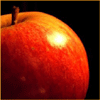

The wide-ranging debate brought about by the calculus reform movement has had a significant impact on calculus textbooks. In response to many of the questions and concerns surrounding this debate, the authors have written a modern calculus textbook, intended for students majoring in mathematics, physics, chemistry, engineering and related fields. The text is written for the average student -- one who does not already know the subject, whose background is somewhat weak in spots, and who requires a significant motivation to study calculus. The authors follow a relatively standard order of presentation, while integrating technology and thought-provoking exercises throughout the text. Some minor changes have been made in the order of topics to reflect shifts in the importance of certain applications in engineering and science. Wherever practical, concepts are developed from graphical, numerical, and algebraic perspectives (the "Rule of Three") to give students a full understanding of calculus. This text places a significant emphasis on problem solving and presents realistic applications, as well as open-ended problems. ALTERNATE EDITION: In order to provide greater flexibility to the user, The Alternate Edition of Calculus features a later introduction of transcendental functions than is found in the second edition. The Alternate Edition covers logarithmic, exponential, and inverse functions after the basic material on differentiation and integration has been developed (Chapter 6). The Alternate Edition is available in its combined version only, including Chapters 0-14. |TECHNOLOGY USE: The authors have employed a generic use of technology throughout the text, using only features that are shared by virtually all graphing calculators and computer algebra systems. Only those features of technology that clearly aid in the understanding of the concepts of calculus are used. The authors believe that technology can and should be introduced as a natural part of a coherent development of calculus. Throughout the text, advice and guidance on the proper use of technology is provided, as well as tools to help students determine when the use of technology is most appropriate. Users are expected to have access to a graphing calculator or a computer algebra system and to use it routinely. |FLEXIBLE EXERCISE SETS: This text contains more than 7000 exercises, found at the end of each section, as well as review exercises at the end of each chapter. Each exercise set has been carefully designed to provide a wide variety of routine, moderate, and challenging exercises. The authors have taken great care to create original and imaginative exercises that provide an appropriate review of the topics covered in each section and chapter. |WRITING EXERCISES: Each exercise set begins with a variety of writing exercises, clearly labeled as such by a writing icon. These exercises can be used as springboards for discussion and are intended to give students an opportunity to carefully consider important mathematical concepts and ideas and to express these in their own words. |APPLICATIONS: The use of applications to relate Calculus to the real world is a true strength of this text. Most concepts are developed with an applied focus, using applications from within studentsż experiences to both motivate the development of topics and further illustrate concepts already presented. This proves to engage the attention and imagination of a wide range of students while tying in the conceptual development to their every day experiences. |WRITING EXERCISES: Each exercise set begins with a variety of writing exercises, clearly labeled as such by a writing icon. These exercises can be used as springboards for discussion and are intended to give students an opportunity to carefully consider important mathematical concepts and ideas and to express these in their own words. |EMPHASIS ON PROBLEM SOLVING: This text features a strong problem-solving emphasis, including the introduction of many topics from graphical, numerical and algebraic points of view. In many instances, the emphasis on graphical and numerical methods allows the authors to present more realistic and complex problems than are often presented in calculus. As a result, students will have a more complete idea of the usefulness of calculus and can solve a wider variety of problems.
więcej
Informacje dodatkowe o Calculus Concepts & Connections:
Wydawnictwo: angielskie
Data wydania: b.d
Kategoria: Popularnonaukowe
ISBN:
Liczba stron: 0
Kup książkę Calculus Concepts & Connections
Sprawdzam ceny dla ciebie ...
Cytaty z książki
REKLAMA
Zobacz także
Calculus Concepts & Connections - opinie o książce
Inne książki autora
Why War
0
Why did America invade Iraq? Why do nations choose to fight certain wars and not others? How do we bring ourselves to believe that the sacrifice of our...
Architect's Drawings
Zobacz wszystkie książki tego autora
0
The sketch is a window into the architects mind. As creative designers, architects are interested in how other architects, particularly successful ones...

















Chcę przeczytać,